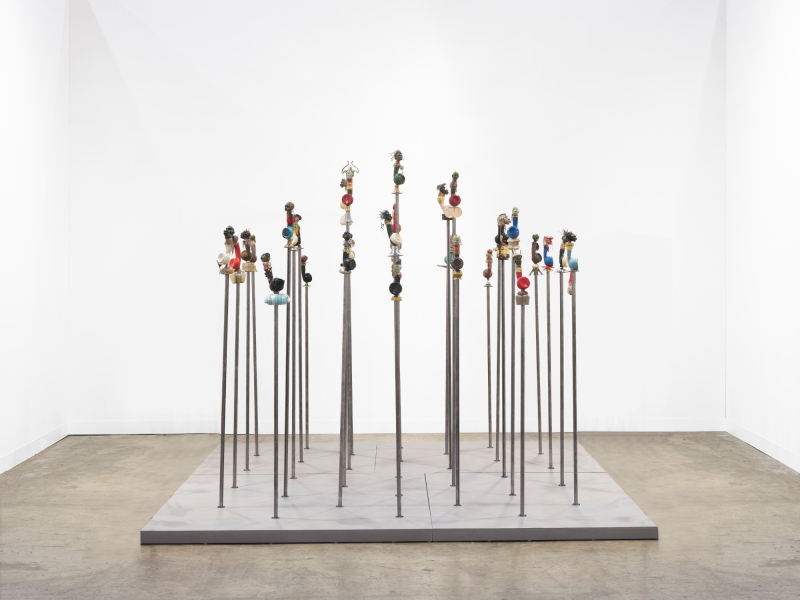
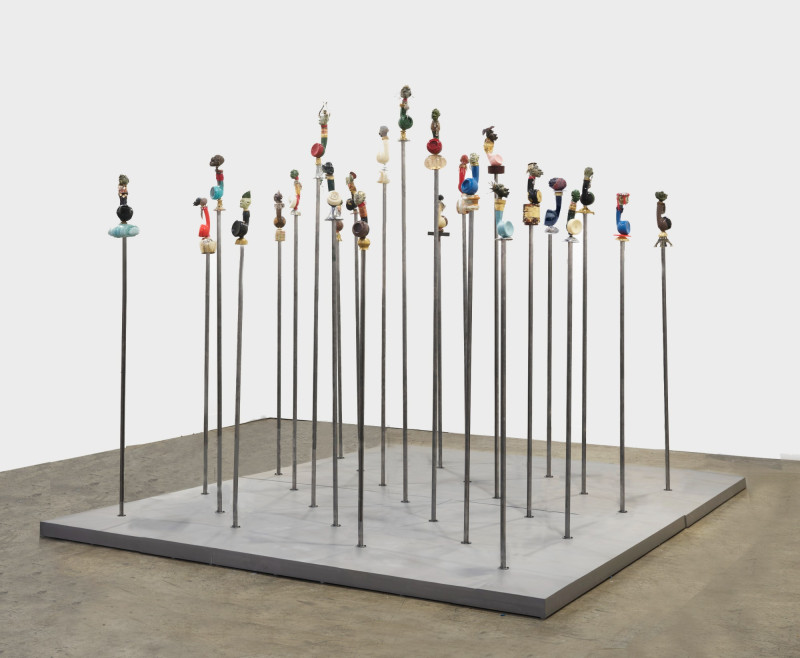
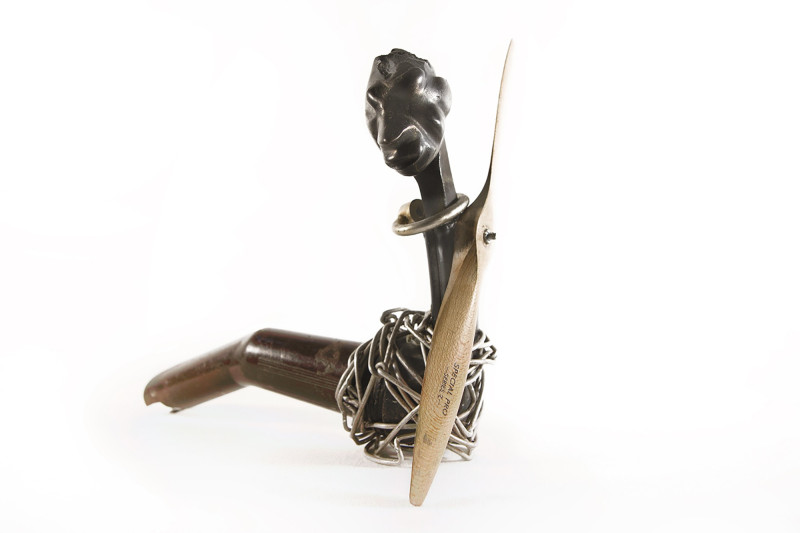
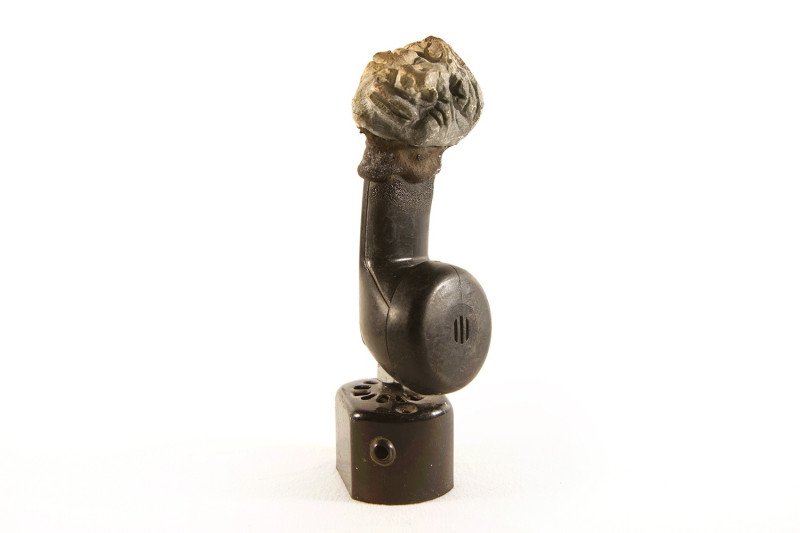
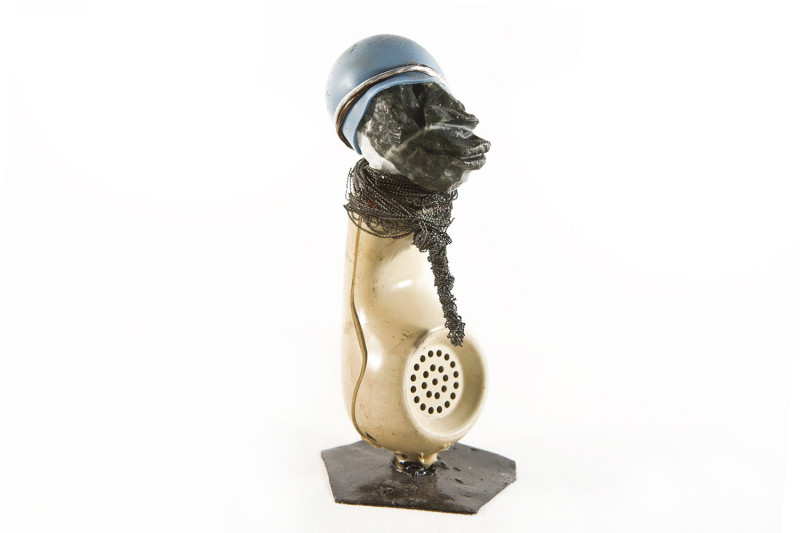
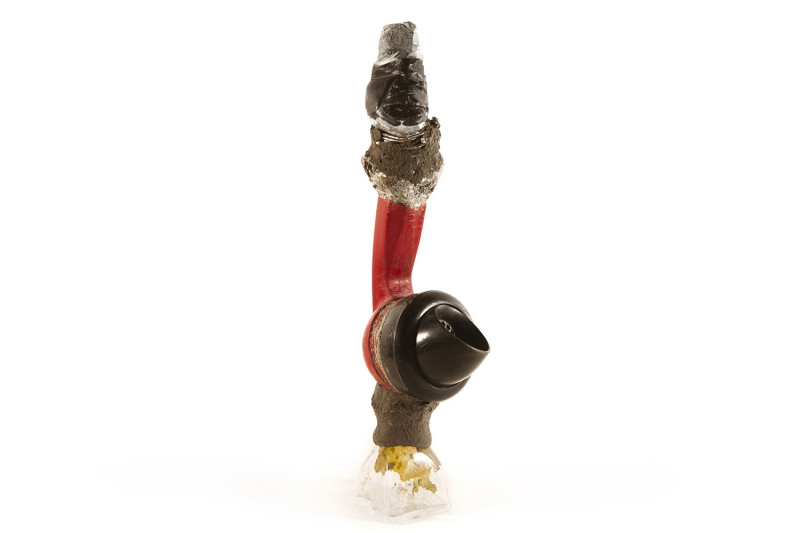
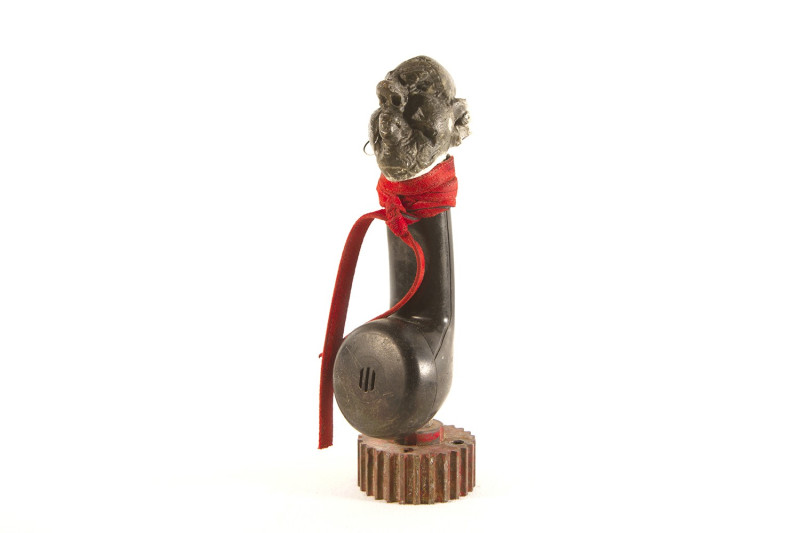
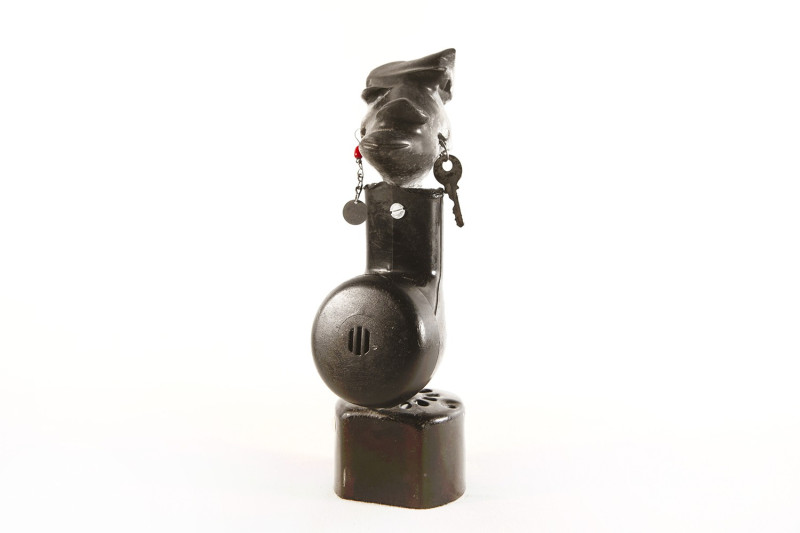
Vashandi Vehurumende (Government Workers) includes, in its possible
variation, 25, 41 or 61 sculptures standing individually on a tall, thin, metal
stand. Together, the grouping presents as one dynamic installation,
allowing viewers to walk around the whole, but not in between the works.
The arrangement suggests a governmental structure: the leader being
always visible, but out of reach.
Each sculpture has at its starting point a stone head – carved from opal,
cobalt, butter jade, serpentine, white marble, verdite, epidote, or
springstone, and the receiver of a rotary phone dating from the 1950s to
the 1970s, a time before Zimbabwe gained its independence and was still
known as Rhodesia. The combination of stone and outdated
communication tools may lead into a discussion on the complicated
relationship of two histories that make up current-day Zimbabwe; and may
be broadened to bring into light global ecological questions surrounding
the discarding of obsolete technology, and the trend of fading traditions
at the hands of capitalism; or the conversation may obsess with the
seamlessness, the finesse, the intricacy and sturdiness of each sculpture.
Once the stone and phone are fused, Musekiwa continues constructing
using excess human materials, signaling where civilization stands in time:
what we are consuming, discarding, overproducing. The debris of history
is inherited; often dormant and unnamed in the collective human psyche.
It can be excavated. And so, Musekiwa takes an archeological approach.
Transforming each material, transplanting it out of its prior use, Musekiwa
endows each character with deeper specificity and personality: humor,
pain, voice, freedom, power, vocation, style, attitude, rebelliousness,
divinity, ancestry, spirit, pride. As the magic of formation acquires the
emotions of the characters portrayed, the sculptures look back at the
voyeur when contemplated, taking on a dominant role by confronting who
observes them and enacting a presence implying agency. This threshold
between looking and being watched is a space that interests Musekiwa,
who uses the collective title of the works, Government Workers, to signal
an underlying relationship. The viewer’s own perception of their
government – trust, conspiracy, threat, violence – becomes a trigger for
interpretation, releasing the sculptures from clear definition or immobile
meaning.
In choosing this title, we also catch a glimpse into Musekiwa’s relationship
with his own government, and with the governments which limit his
movement. These works will be Musekiwa’s first series made outside
Zimbabwe as he begins a parallel life in the UK. What turmoil and joy will
migration seep in? In a time when movement across borders is at the
forefront of our geo-political concerns, Musekiwa folds his fresh personal
transformation atop a life-long experience of living in a post-colonial
space; and existing as an “other” in every movement outside that place.
As we approach a more inclusive, more international era in contemporary
art, Musekiwa’s work embodies resistance to a system of definitions and
the hierarchies of the past, and importantly, defies erasure in the face of
globalization.







